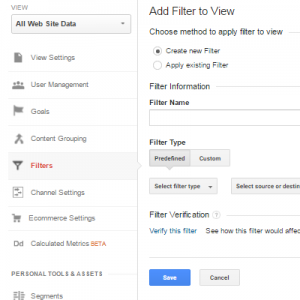Corrective action has always been an important process within a Quality Management System (QMS), and this does not change with the new release of the standard, ISO 9001:2015. This is why one of our first blog posts was about this important topic: Seven steps for corrective and preventive actions to support continual improvement, and this is also why we have posted other blogs on this important topic as we wrote more information about ISO 9001 and Quality Management Systems.
However, even with this long heritage for corrective actions within a QMS, many still have problems with knowing how to proceed once the corrective action is defined. After identifying the root cause to make sure that you are not just correcting a surface problem, and defining the plan to address the root cause, some companies have difficulty completing the corrective action process to the end. Here is more about what needs to happen to complete your corrective action.
What comes after the corrective action plan is defined?
There are three important steps to follow once you have identified your corrective action plan to address the root cause of your problem. These are as follows:
- Assess the risks and opportunities of the change: It has always been important to make sure that the changes you have decided to make are not going to cause more problems, but with the new version of the ISO 9001 standard there is a requirement to address the risks and opportunities that are present when you are going to make a change. For example, by making a process change to address a root cause, is there a risk that the output of the process will cause a problem further on in your business or even at your customer’s site? If you have identified a good corrective action for one process, is there an opportunity that this can be put in place for other processes to prevent problems form occurring in the future?
- Carry out the planned changes: Of course this step is important, and is often the focus of the corrective action process. The two most common problems in this step are cost overruns and timeliness. If your estimated budget is not accurate enough, the cost for your corrective action plan could grow more than is acceptable; have you included equipment installation and training costs if applicable to your plan? If your corrective action plan has many steps or will take a long time, have you assigned a project manager to make sure that the plan will progress in a timely manner? Proper management of a corrective action plan implementation can often help with these problems.
- Verify the effectiveness of the corrective action: This step is one that is often misunderstood and confused, but the correct verification is critical to a good corrective action process. Many people think that this step is used to verify that the corrective action plan is completed, but this is not the meaning of the ISO 9001 requirement. The verification needed is to ensure that the corrective action plan has been effective in addressing the root cause, and this often takes time. It is critical that you include an adequate amount of time to verify that the corrective action steps taken have actually addressed the root cause of the original problem. If you corrected a problem in a process that is only performed once a month, then you may need to wait several months after the plan is completed to successfully verify that the problem does not recur. Setting an arbitrary deadline to close the corrective action without thinking how long it should take to verify for effectiveness is foolish and can eventually lead to recurring problems that are not actually addressed.
If a problem is big enough to invest the time and resources into creating a corrective action, it is important enough to ensure you correct the problem properly and make sure it stays fixed.
With corrective action, the entire process is important
So, as you can see, these last three steps need to be as well thought out as the original analysis of the root cause and creation of the corrective action plan. If you take shortcuts in the end of the corrective action process, you may well have wasted the energy and resources you have already invested into addressing the problem you have identified, even risking the possibility that you will need to start over when the problem recurs.
For the best results, make sure you fully complete the corrective action process before considering your corrective action done; you owe it to yourself to have a good way of addressing problems and preventing them from coming back.
To learn the basics about corrective actions and how to approach them, use this free online training ISO 9001:2015 Foundations Course.
Business & Finance Articles on Business 2 Community(40)






